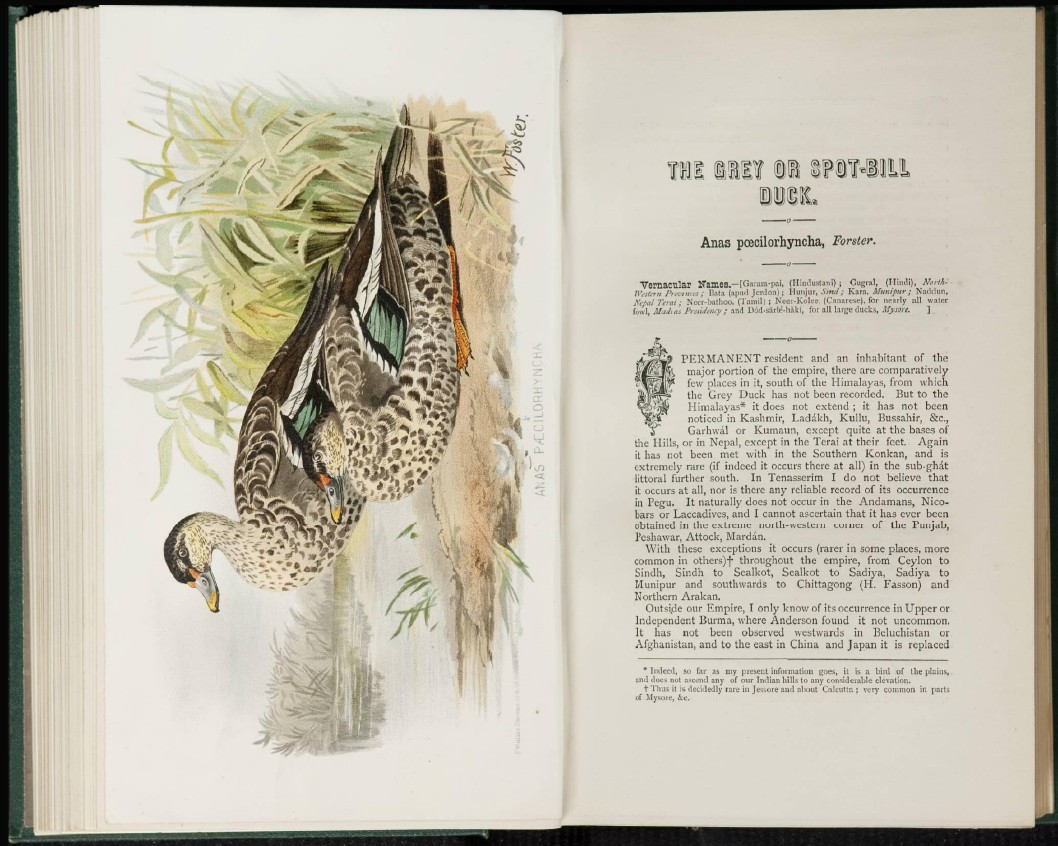
I l l 111? i i 3PD/M1U
Anas poacilorhyncha, Forster.
Vernacular Names.—[Garam-pai, (Hindustani) ; Gugral, (Hindi), North-
Western Provinces; Tlata (apud Jcrdon}; Hunjur, S/rtd; Kara, Munipur; Naddun,
Ntpai Terai; Neer-bathoO, (Tamil) j Neei-Kolee. (Canarese). for nearly all water
fowl, Madias Presidency ; and Ddd-saiie-haki, for all large ducks, Mysore. ]
PERMANENT resident and an inhabitant of the
major portion of the empire, there are comparatively
few places in it, south of the Himalayas, from which
the Grey Duck has not been recorded. But to the
Himalayas* it does not extend ; it has not been
noticed in Kashmir, Ladakh, Kullu, Bussahir, &c,
Garhwal or Kumaun, except quite at the bases of
the Hills, or in Nepal, except in the Terai at their feet. Again
it has not been met with in the Southern Konkan, and is
extremely rare (if indeed it occurs there at all) in the sub-ghât
littoral further south. In Tenasserim I do not believe that
it occurs at all, nor is there any reliable record of its occurrence
in Pegu. It naturally does not occur in the Andamans, Nicobars
or Laccadives, and I cannot ascertain that it has ever been
obtained in the extreme north-western corner of the Punjab,
Peshawar, Attock, Mardân.
With these exceptions it occurs (rarer in some places, more
common in others)-]- throughout the empire, from Ceylon to
Sindh, Sindh to Scalkot, Scalkot to Sadiya, Sadiya to
Munipur and southwards to Chittagong (H. Fasson) and
Northern Arakan.
Outsi.de our Empire, I only know of its occurrence in Upper or
Independent Burma, where Anderson found it not uncommon.
It has not been observed westwards in Beluchistan or
Afghanistan, and to the east in China and Japan it is replaced
* Indeed, so far as my present information goes, it is a bird of the plains,
and does not ascend any of our Indian hills to any considerable elevation.
t Thus it is decidedly rare in Jessore and about Calcutta j very common in parts
of Mysore, &c.